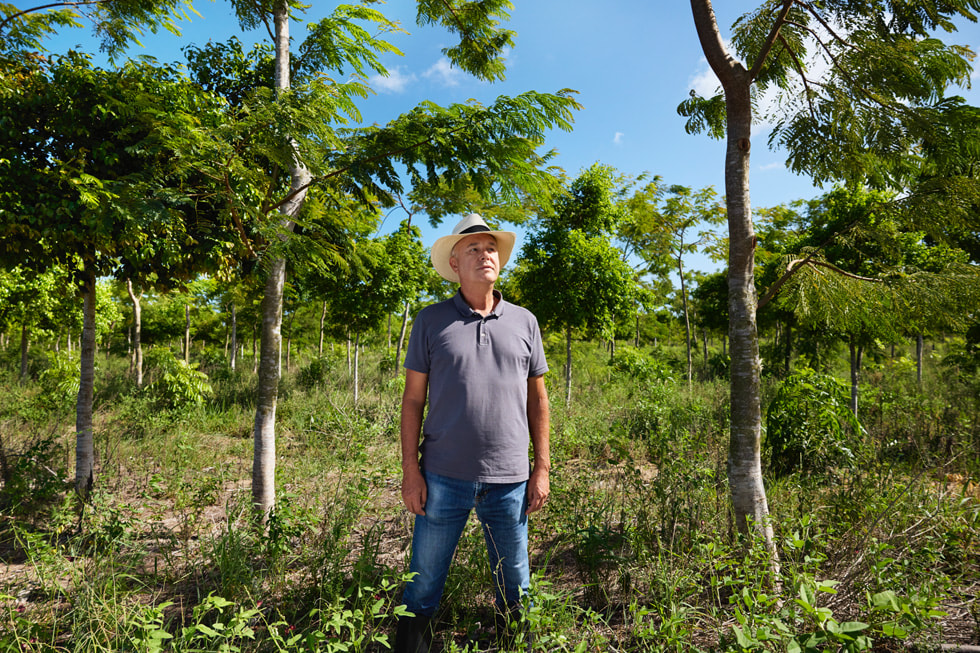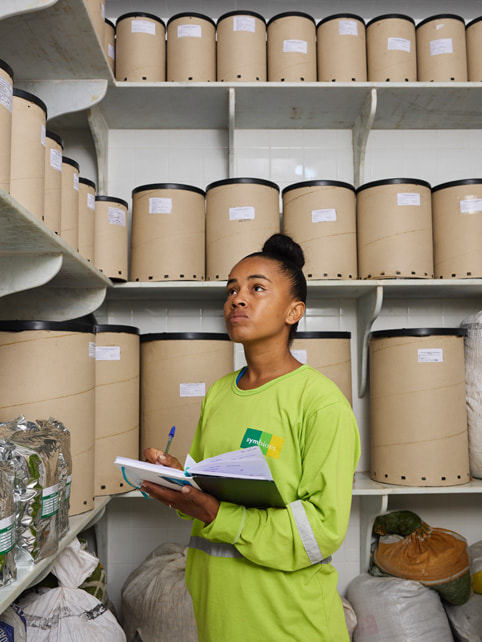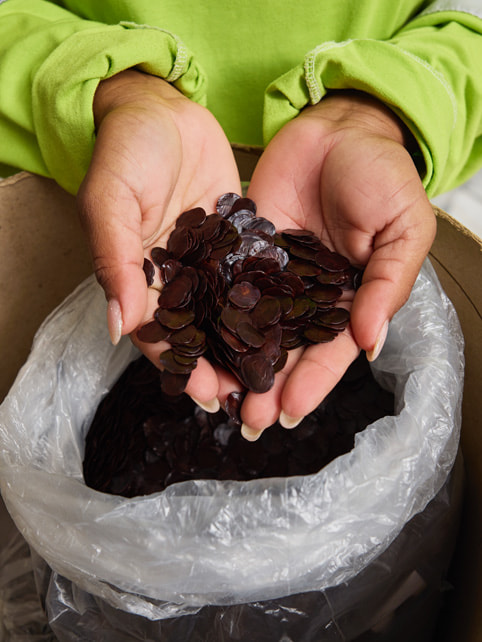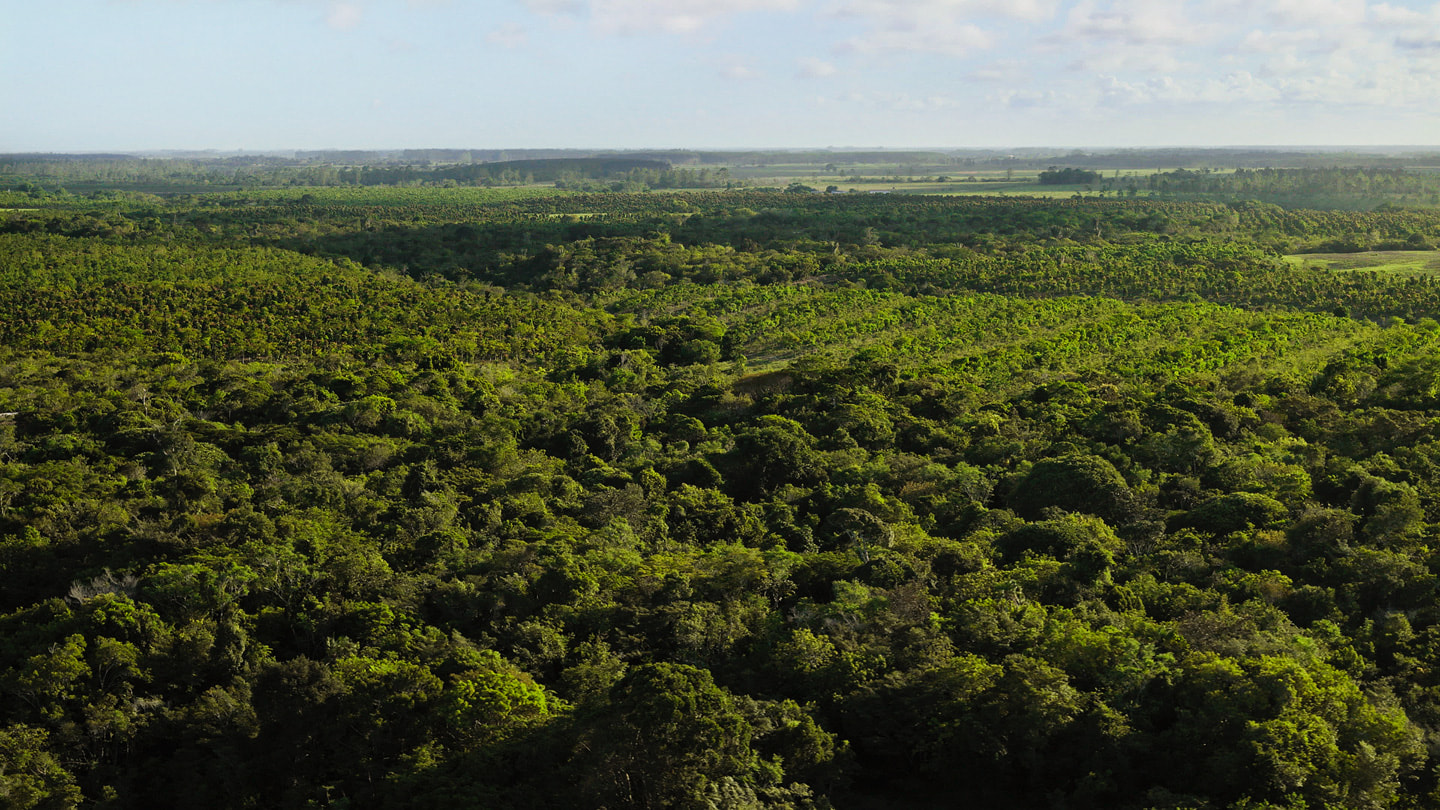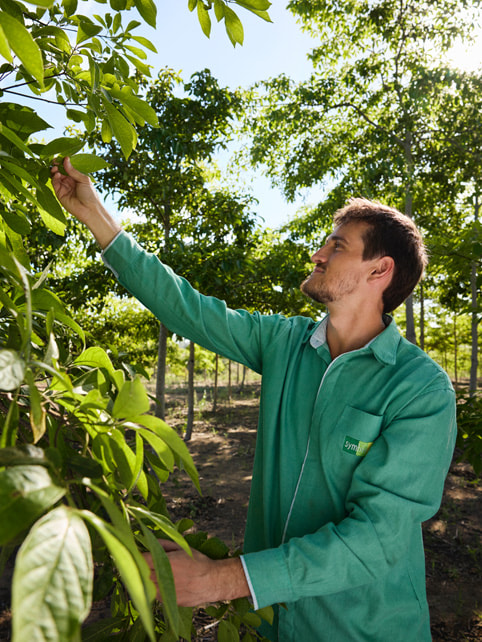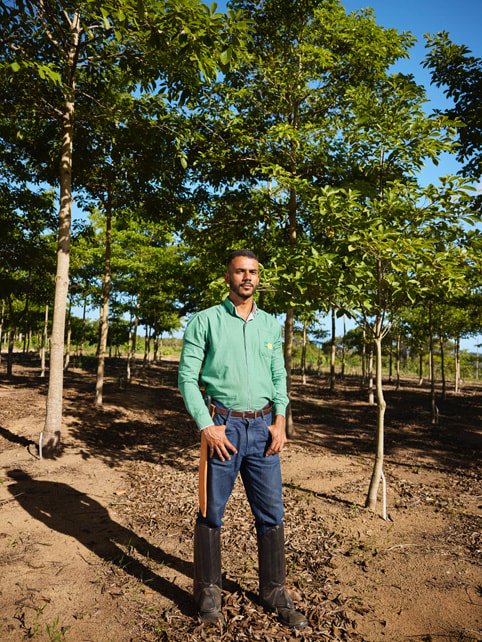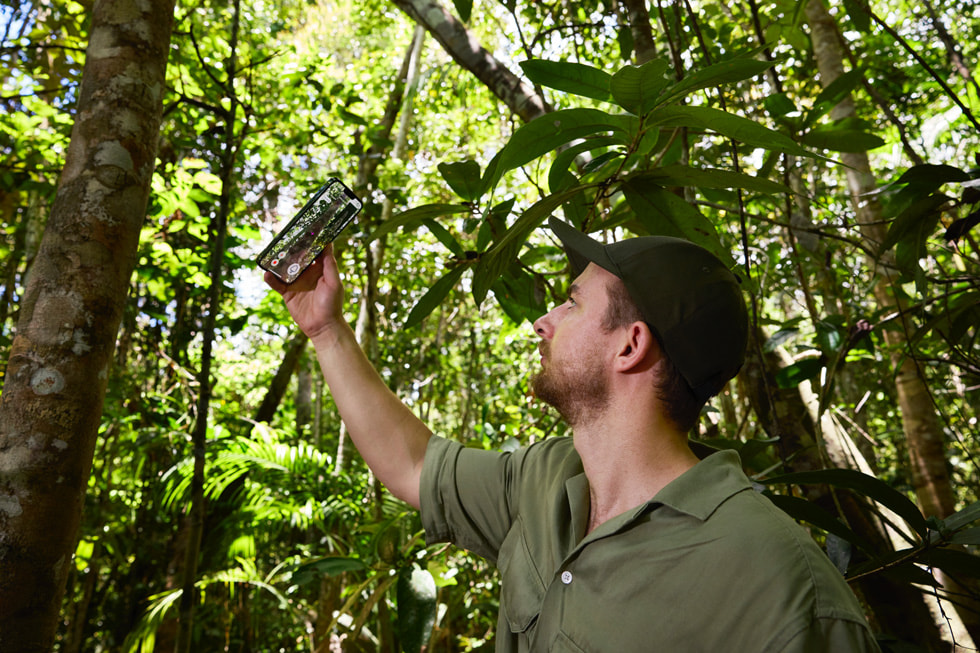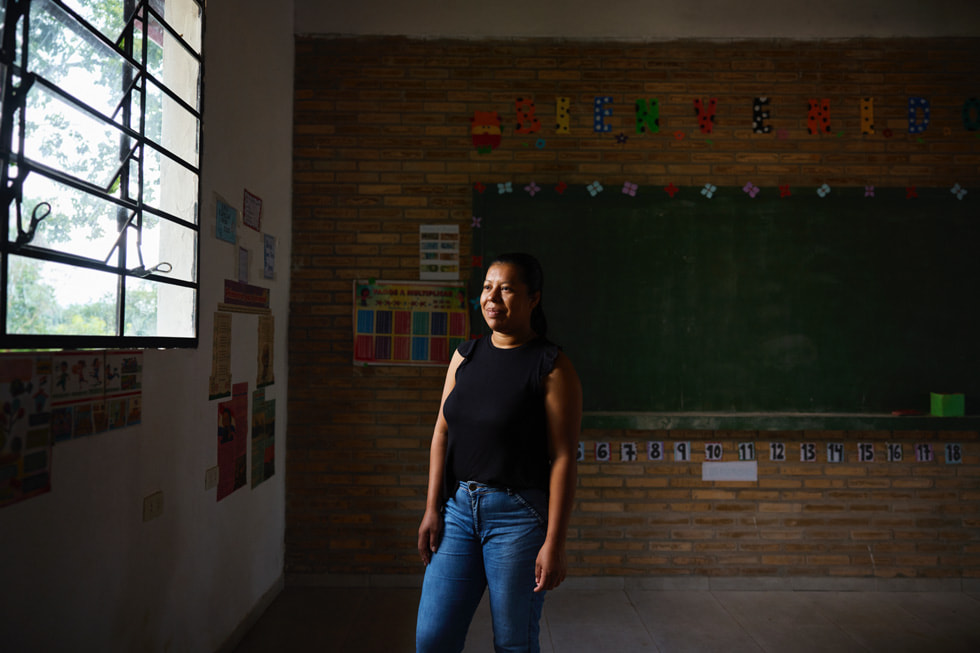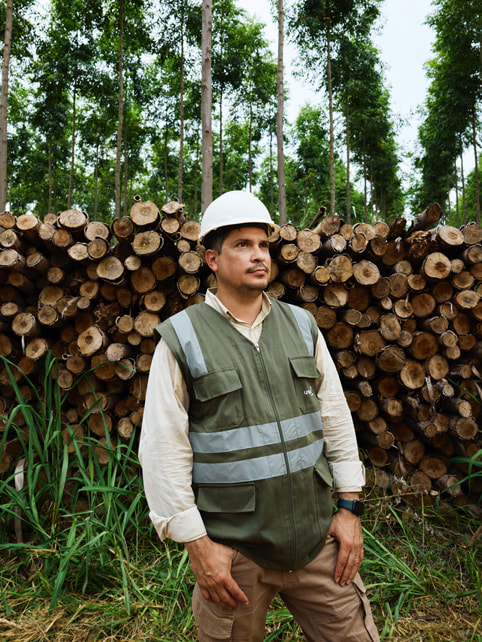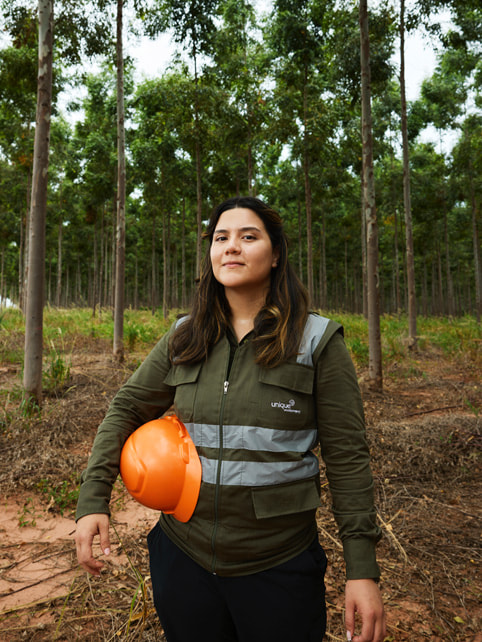apple stories
Apple’s Restore Fund cultivates new roots in the Atlantic Forest
Restore Fund projects in South America are reforesting the land, one seedling at a time
In South America’s Atlantic Forest, many suggest that life depends on a mother: the superior matriarch who provides for all. This is true for its plants and animals, and even the trees that tower above, reaching skyward to the sun while providing shade for the life that resides in their underbrush.
It is estimated there are 5,000 tree species in existence in the Atlantic Forest today. Of those species, two-thirds are threatened with extinction after centuries of exploitative, extractive practices. Restoring the rainforest — a potential 100 million-acre restoration area in Brazil alone — has been at the core of Apple-supported projects in the region, including one just inland from the coastal town of Trancoso in Bahia, Brazil, where one company is cultivating seedlings from mother trees, the most resilient trees from multiple species that have survived the rainforest’s destruction.
“We started with the best genetic material possible, harvested in a huge native reserve of the Atlantic rainforest,” explains Bruno Mariani, forest management and investment company Symbiosis’s founder and CEO. “That would attract a lot of fauna and insects.”
Founded in 2008, Symbiosis has been collecting, banking, and planting seeds from mother trees of various Brazilian native species since 2010. “The mother tree represents the nature that provides us all the energy and the basis for restoration, so the mother tree gives us all,” says Mickael Mello, Symbiosis’s plant nursery manager.
Symbiosis is one of three investments that are part of Apple’s Restore Fund, announced in 2021 with the goal of scaling nature-based solutions to address climate change. In partnership with Goldman Sachs and Conservation International, the Restore Fund has invested in three carbon removal projects across Brazil and Paraguay with the aim of delivering benefits that go far beyond carbon — from strengthening local livelihoods to enhancing biodiversity.
From left to right: (1) Fabiane Souza M. Delmira leads the plant nursery team and monitors seed storage at Symbiosis. Listen to her describe the importance of using seeds from mother trees to produce seedlings. (2) In Symbiosis’s seed bank, shelves of canisters contain hundreds of thousands of high-quality seeds from the most resilient trees on the company’s land in the Atlantic Forest.
From top to bottom: (1) Fabiane Souza M. Delmira leads the plant nursery team and monitors seed storage at Symbiosis. Listen to her describe the importance of using seeds from mother trees to produce seedlings. (2) In Symbiosis’s seed bank, shelves of canisters contain hundreds of thousands of high-quality seeds from the most resilient trees on the company’s land in the Atlantic Forest.
Since their first planting, which consisted of 160 different species spread across an area that will be permanently protected from wood harvesting, Symbiosis has expanded its restoration of threatened native trees. In its efforts to decrease biodiversity loss, Symbiosis has committed to conserving 40 percent of its land with natural, multispecies forests, while the remaining land supplies precious tropical hardwoods from responsibly managed sources. After planting 800 hectares of biodiverse forestland over a decade, the company has ambitions to plant over 1 million seedlings on 1,000 hectares in 2024 alone.
“Trees work in groups, like a network,” says Mariani. “They are social beings and they want to help each other. For different species, their roots go to different depths of the soil so they’re not competing — they’re cooperating.”
The Atlantic Forest is situated along South America’s eastern coast, starting in northeastern Brazil and sprawling farther inland as it makes its way down to southeastern Paraguay and northern Argentina. It is just 40 miles wide at its northernmost point and stretches approximately 200 miles inland from its southern Atlantic coastline. After more than 500 years of deforestation, the rainforest has been depleted by 80 percent, with the terrain cultivated as agricultural land for coffee, cacao, sugarcane, and other crops; and used as pastures for livestock. Much of the rainforest has been depleted of its precious hardwoods — including the brazilwood and Brazilian rosewood used in furniture, construction, and even musical instruments like guitars. Today, similar activity is underway in the Amazon.
Estimates show the Atlantic Forest has a potential reforestation area of around 40 million hectares, or 100 million acres. Symbiosis’s approach to forestry aims to both create a high-quality sustainable working forest while continuing the fight against climate change with one of the most vital tools for carbon sequestration: nature itself. “We’re balancing wood production and carbon stocks,” explains Alan Batista, Symbiosis’s chief financial officer who studied forestry and whose career spans plant propagation in the pulp and paper industry, business strategy, economics, and finance.
“Woody biomass actually creates a lot of carbon stored here, and we know we have a lot of carbon being stored in the soil as well,” Batista says. “So when it comes to harvesting, we have to think all the way from the beginning to the end of the cycle. The management we’re applying here is continuous cover forest management, meaning we’re going to manage for perpetuity. It’s going to always be covered with forest.”
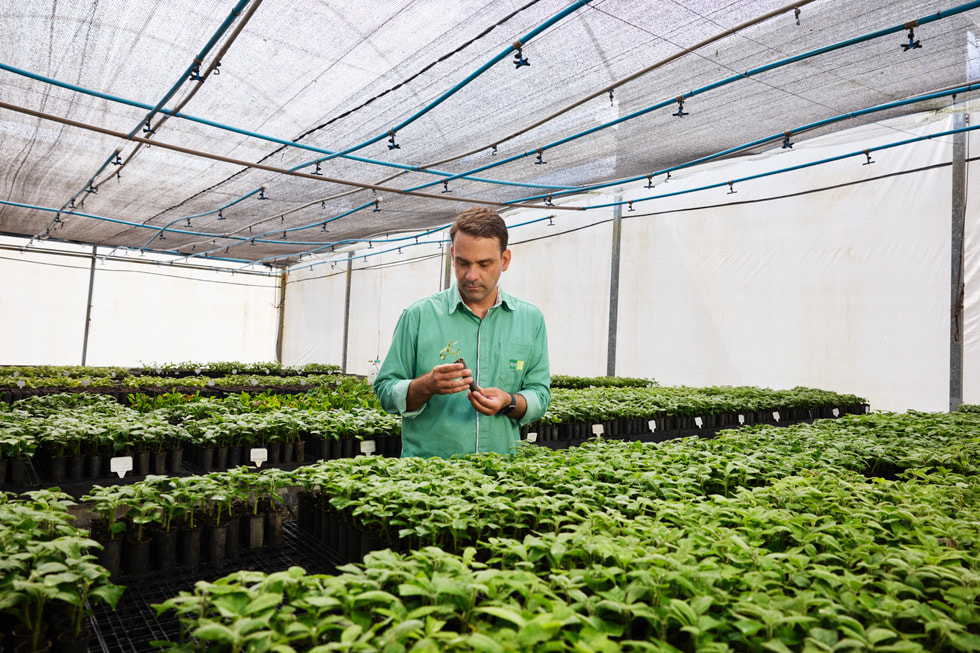
After obtaining his degree to become a forest engineer, Symbiosis CFO Alan Batista spent his early years in the pulp and paper industry honing his technical skills in plant propagation and cloning before pursuing his master’s abroad, where his interest in new forms of silviculture with native species grew.
From left to right: (1) Mickael Bandeira de Mello, the plant nursery manager at Symbiosis, is tasked with helping to grow its planting operation from 800 hectares over 10 years to 1,000 hectares in one. (2) Forest engineer Victor Leon Rocha Araújo analyzes the performance of Symbiosis’s previous planting sites — from soil quality to tree health — to determine plans for its future planting sites.
From top to bottom: (1) Mickael Bandeira de Mello, the plant nursery manager at Symbiosis, is tasked with helping to grow its planting operation from 800 hectares over 10 years to 1,000 hectares in one. (2) Forest engineer Victor Leon Rocha Araújo analyzes the performance of Symbiosis’s previous planting sites — from soil quality to tree health — to determine plans for its future planting sites.
To calculate the carbon stored on its land, Symbiosis has integrated Space Intelligence’s satellite data, ecological knowledge, and machine learning to create land cover, land cover change, and forest carbon maps. Satellite data is integrated with readings from the ForestScanner app, which takes field measurements with the LiDAR scanner on iPhone to determine age and growth rate. “They’re helping us to screen properties and land use — how much pasture area, forest areas, and retroactive deforestation,” Batista explains.
Part of the screening process is identifying areas that are designated as land that belongs to Indigenous communities, who Symbiosis hopes to soon partner with on identifying and collecting seeds from mother trees on their lands. After visiting the Amazon in 2007 to see how one Indigenous community reforested an area that had been destroyed by loggers along the Peruvian border, Mariani was inspired.
“The leaders were talking to me about climate change and they took me to that place they reforested, and it looked like an original forest,” Mariani recalls. “It was inspiring to me to see the power of restoration of nature and how traditional knowledge can be combined with science.”
A little over 1,600 miles southwest of Trancoso, another Restore Fund project is underway at Forestal Apepu in the San Pedro district of Paraguay.
In this southwestern region of the Atlantic Forest, Forestal Apepu is developing fast-growing eucalyptus forests for high-quality timber production on lands that were deforested decades ago, while protecting the remaining natural forest and planting native species through experimental trials. By focusing on high-quality timber managed on longer growing cycles, Forestal Apepu allows for more carbon removal and longer-term storage on its forestland. They also hope the solid wood products produced from their high-quality timber will alleviate pressures on the natural forest itself, resulting in carbon being stored in long-lived wood products even after a tree is cut.
A key part of Forestal Apepu’s work extends beyond the borders of the forest: The project is also supporting the local communities through a series of social impact initiatives around the neighboring San Estanislao, Paraguay.
The landlocked region has depended on the forest for timber, firewood, and their agricultural needs for generations. As part of Apple’s Restore Fund, Forestal Apepu is working with local communities to identify alternate sources of supplemental income that alleviate pressure on the timber forests in the area. These sources include employment in the company’s Forest Stewardship Council-certified eucalyptus farms, land leases through its outgrower model (in which smallholder landowners are given seedlings and technical assistance to grow and manage timber), chicken production through a local women’s association, and yerba mate cultivation.
Graciela Gimenez has lived in Cururu’o, a small community of roughly 1,200 people, for 40 years. Every morning, she wakes at 5 a.m. to start her daily routine: feeding and changing the water for her chickens, cleaning the house, cooking the family’s meals, and tending to any needs that may arise for the women’s association she helped create and is president of.
“I’ve always been very present in the community,” Gimenez says. “They like that I have the power to get things going.”
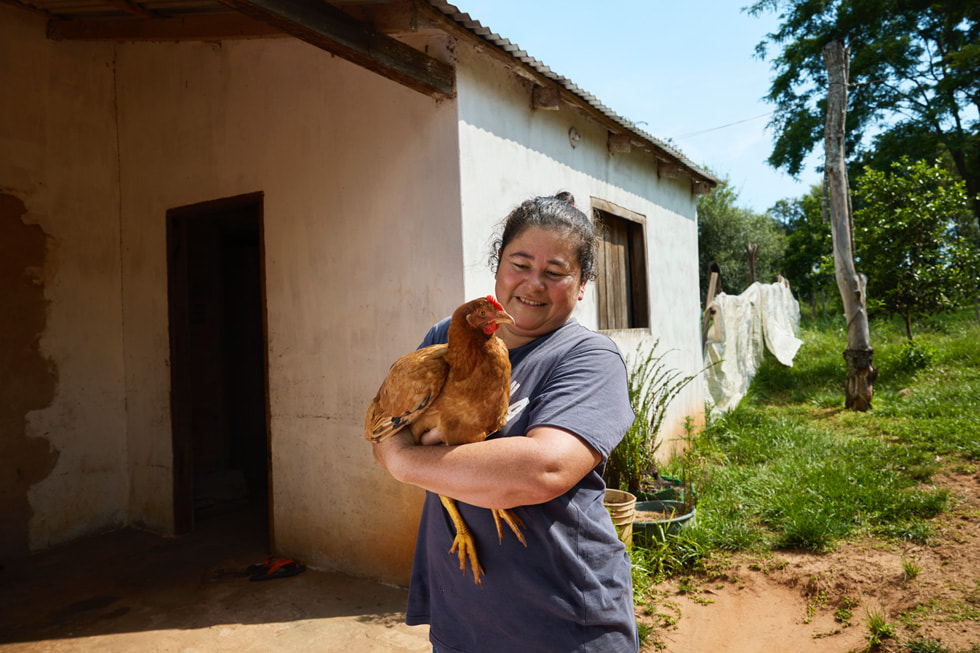
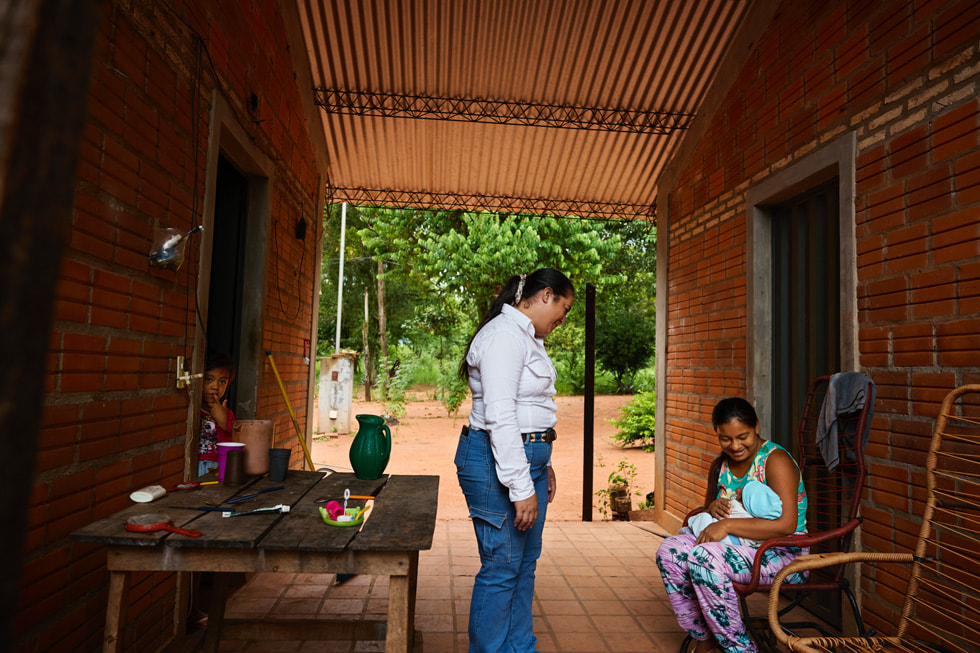
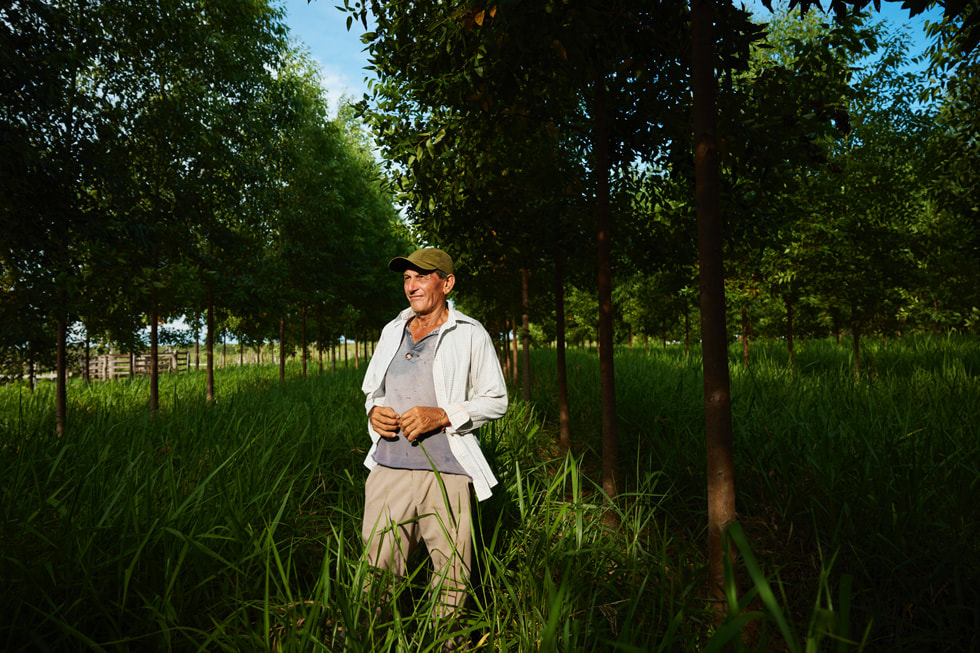
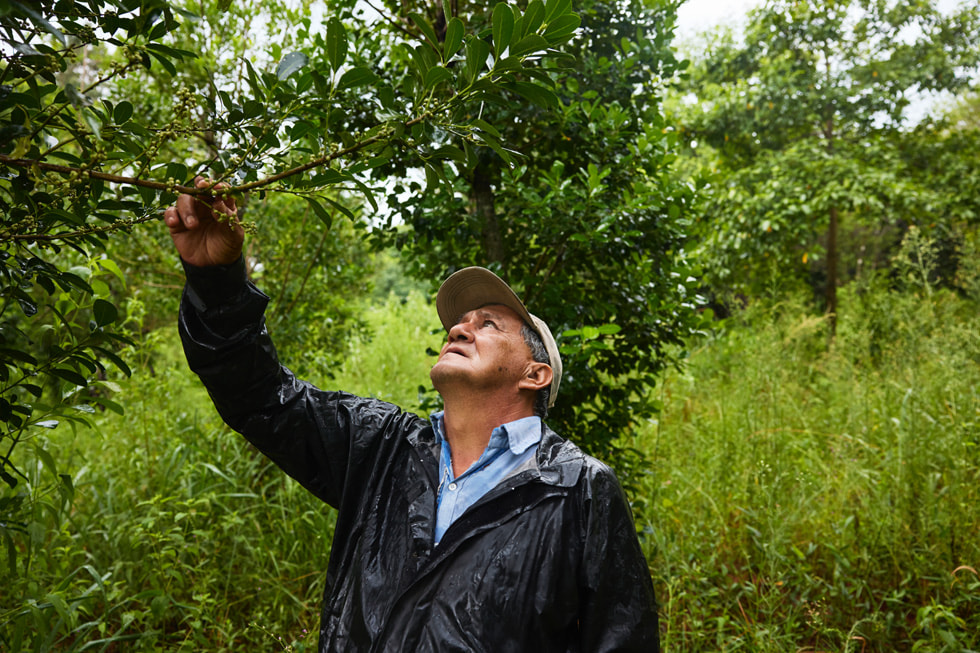
After multiple meetings with Forestal Apepu’s social liaison officer, Gladys Nuñez, Gimenez and the women of the community came together to develop an income stream from raising chickens. Previously, households had inconsistent income primarily from day laboring on nearby land. After Forestal Apepu added 21 chickens to her coop in 2023, Gimenez now has 51 chickens that produce eggs and meat for the family to eat and also to sell.
“We have to take care of our neighbors, who should also be our allies,” Nuñez says. “All of those people from the communities that are working at Apepu, including myself, we are learning every day about forest management, like the health and safety about pesticides or the better use of natural resources. This learning as a community is going to help the environment.”
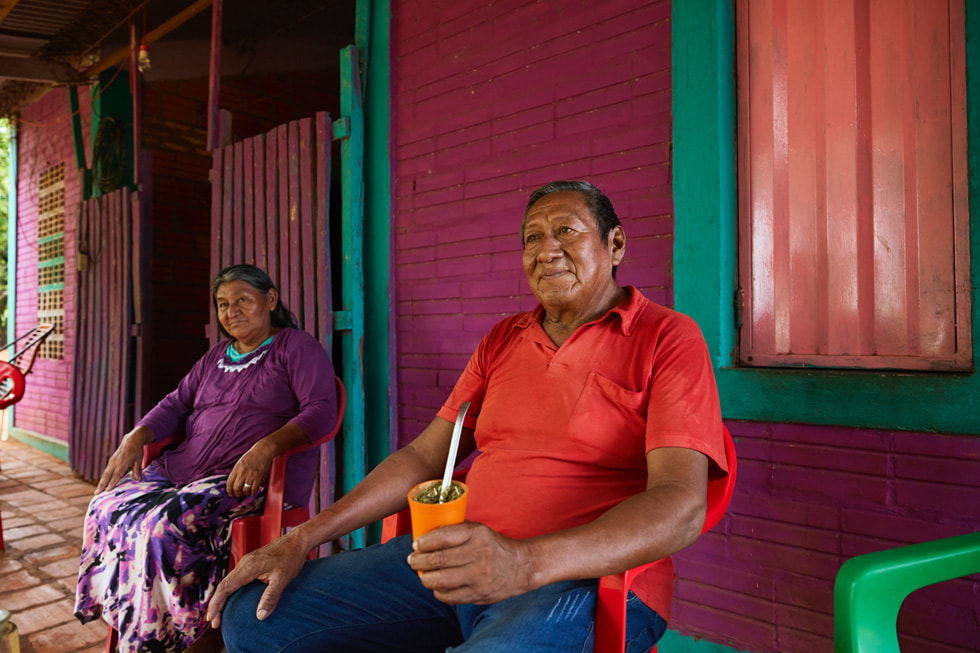
In 1962, Ramon Mariotti (right) and his family left the Chaco region in Paraguay for Palomita I, where they immediately recognized the rich soil of their new home. Mariotti’s father began cultivating yerba mate, teaching him the intricacies of harvesting the plant many Paraguayans rely on to quench their thirst.
Ramon Mariotti, leader of the Palomita I community who settled in the area in 1962 after drought and devastation in the Chaco region, has been growing yerba mate, an herbal tea that for many Paraguayans is the only substance to quench their thirst, in the area. Mariotti’s father taught him the ins and outs of cultivation, including knowing when the leaves are ready, how delicately they must be picked by hand, how to dry and grind them, and how to determine what’s best to sell.
“Ever since we got here, we realized how rich this land is,” Mariotti says. “It’s like having a nature supermarket surrounding us: We can plant anything.”
From left to right: (1) Alvaro Ramirez is Forestal Apepu’s senior forest engineer and CTO, responsible for all ground operations onsite. (2) Forest engineer Belén Osario works with Ramirez and is responsible for maintaining various timber plots onsite.
From top to bottom: (1) Alvaro Ramirez is Forestal Apepu’s senior forest engineer and CTO, responsible for all ground operations onsite. (2) Forest engineer Belén Osario works with Ramirez and is responsible for maintaining various timber plots onsite.
To help expand their harvest, Mariotti has been working with Forestal Apepu’s Alberto Florentín to improve their planting process, including knowing when to plant and how close together they should be to one another.
Florentín has spent 40 years as a forest engineer traveling throughout Paraguay, first with the forest service, then with the National Parks Center at the Museo Moisés Bertoni, a nature preserve where he helped recruit park rangers from the Indigenous communities he was meeting in the area. Florentín credits the knowledge he gained from his many visits to Paraguay’s various regions with his ability to survive anywhere in the country and help others thrive purely on the land itself.
“I want to make sure people here can watch things grow and we do not leave a desert for the future generations,” Florentín says. “With climate change, things have become more and more difficult — water sources are getting scarce, and things that grow are more difficult to find. So I want to make sure that they have all the resources in order to keep growing.”
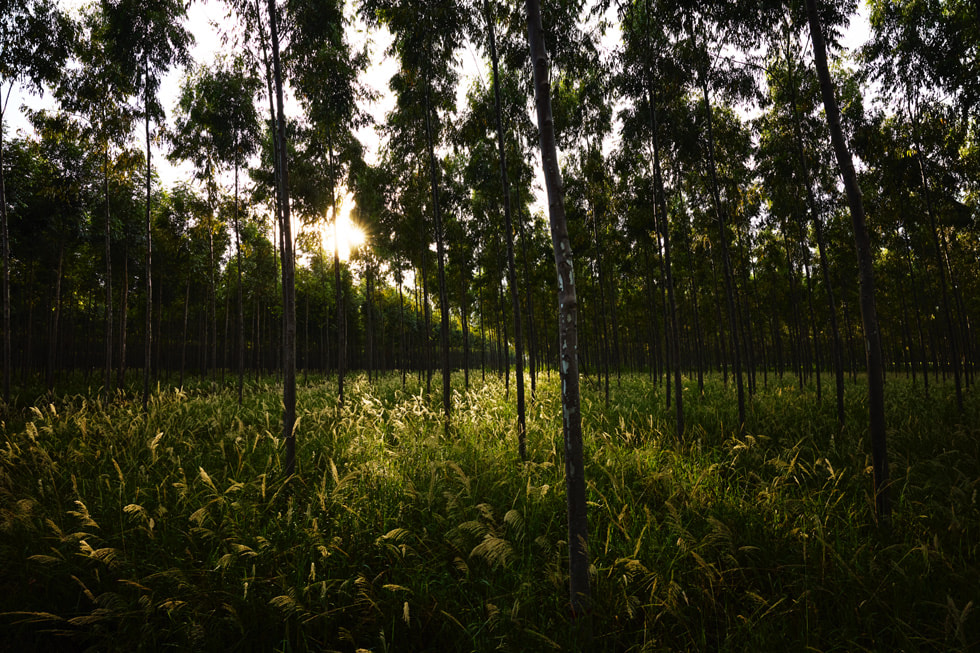
In addition to Forestal Apepu’s working forest operations and community outreach, the company introduced a pioneering bioacoustic monitoring approach to record biodiversity improvements on the land, supported by the International Climate Initiative through the FLILA project. Listen to the sounds of the forest, including local birds, insects, and other fauna that call the area home.
Beyond its community projects, Forestal Apepu is also looking for ways to monitor the wellbeing of the land in its forested areas.
A bioacoustic monitoring experiment has been recording the sounds of the forest, helping a partner team of biologists detect the levels of biodiversity throughout the forest using artificial intelligence and machine learning.
Across Forestal Apepu’s project sites in Paraguay and Symbiosis’s in Brazil, efforts to record, preserve, and revitalize the flora and fauna in each region may seem disconnected, but dig below the surface and they share mutual goals: ensuring the resilience of the most natural places on earth that have for too long been taken for granted.
As Symbiosis’s Mariani recognized when he first started thinking about his company and ultimately solidified its name, “It’s the cooperation among different species with mutual benefits — the opposite of a parasite. What I want to do is symbiosis. It’s a win-win for everybody.”
Share article
Media
-
Text of this article
-
Images in this article
